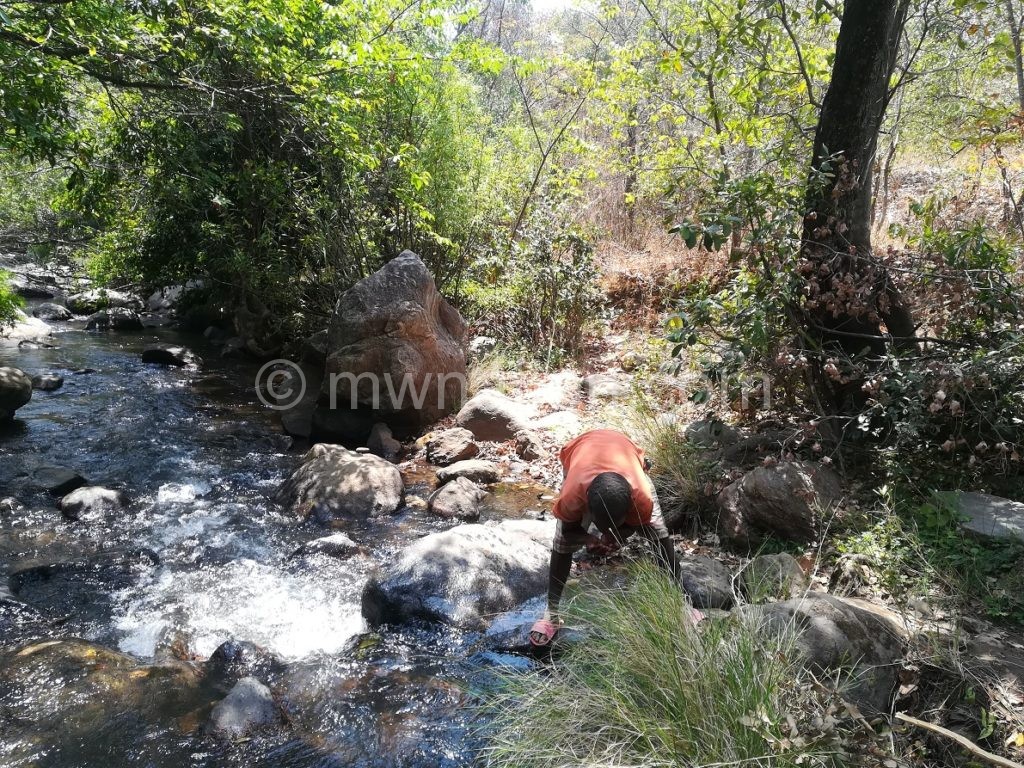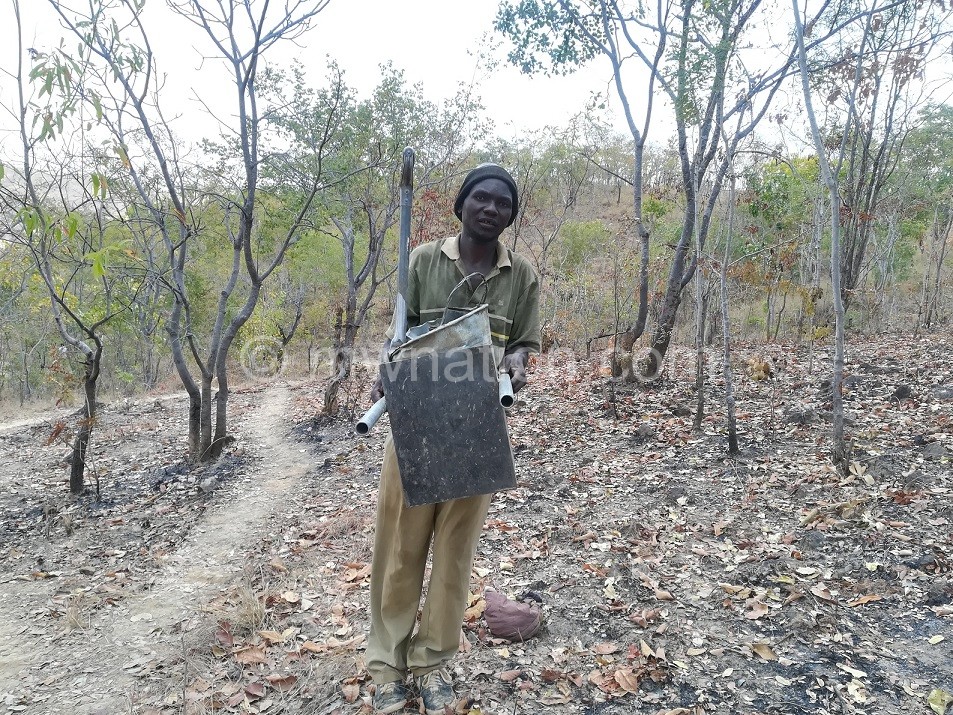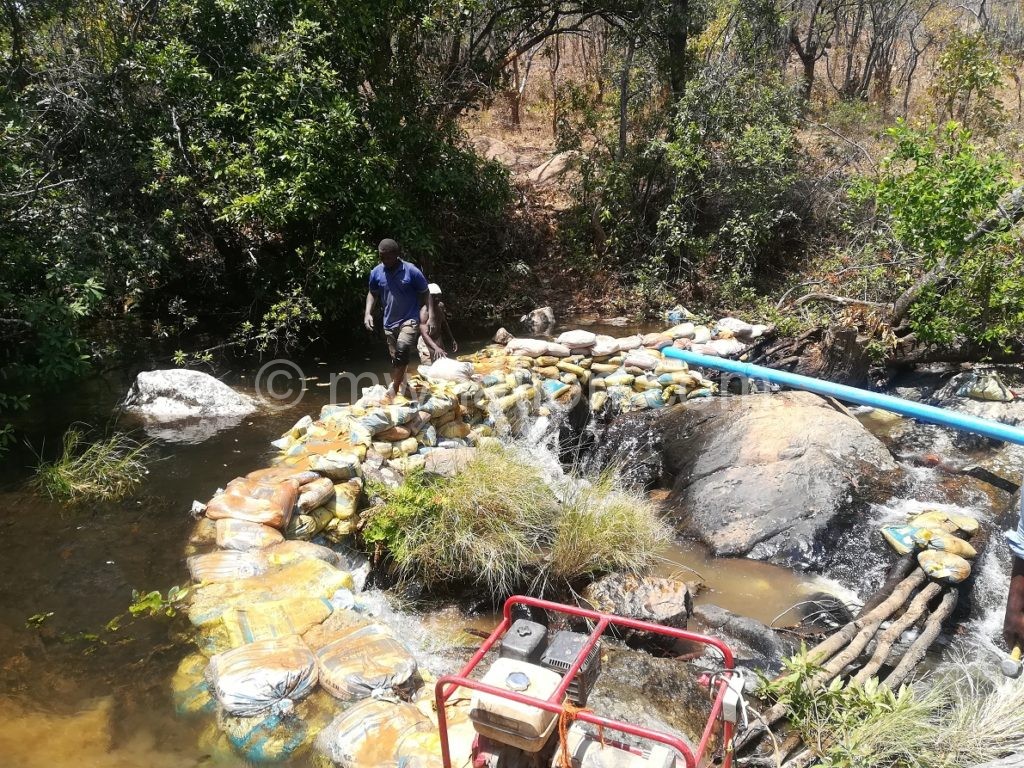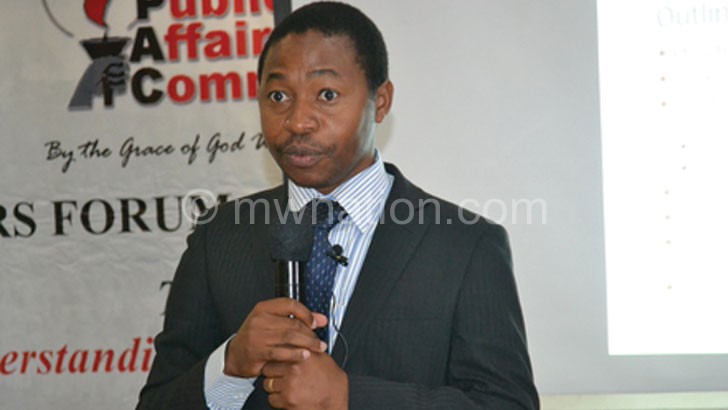So close to clean water, yet so far
Febbie Mfune of Mpota area, in group village head Kadalume under Senior Chief Katumbi in Hewe, Rumphi, cannot remember the last time she tasted any, the water we call clean and potable.
Hers is water from Hewe River, which is 50 metres away from her house—a water body in which people from the area feed their animals such as goats, pigs and cattle; some even bath, urinate and defecate there.

Further, Mfune says, the health centre at Chisimuka, which used to provide chemicals for treating the water no longer provides them.
“We have been drinking that water for as long as I can remember, and we are now just used to it. Sometimes we don’t drink that water because some people pass by my house to take a bath in the river, so you know that I am drinking someone’s dirt,” she says.
Most of these people who bath in the river, according to Mfune, go to a higher part of the river, and her family draws water from the lower part, which makes them susceptible to drinking any dirt.
“We have just decided to only draw the water after all people have taken their bath, and have fed their livestock, of course, that doesn’t mean the water is clean,” she adds.
Mfune’s fears are easily confirmed. While crossing the river, you see old and young people washing their bodies, while others directly drink from the river.
Actually, Senior Chief Katumbi corroborates. He says the area experiences many water-borne diseases because of lack of access to clean water, which needs to be checked urgently.

Worse still, each morning, Mfune wakes up greeting young men carrying utensils such as cement and other materials passing through her house to the source of Hewe River where the Rumphi District Council is constructing an intake point for a scheme and water points for Hewe.
The scheme is one of the five schemes under the Sustainable Rural Water and Sanitation Infrastructure for Improved Health and Livelihood (SRWIHL) project.
The project entails augmentation of the current systems to meet future demands and water quality standards through building new intake works, treatment lines, reservoirs, transmission lines as well as construction of distribution lines and new water points.

Sadly, people like Mfune will not have access to these water points because of the area’s terrain, which makes it impossible for the gravity-fed water system being constructed to provide them water.
The pipes will be passing through her home; she sees people constructing the intake point, but will not access the water. Mfune and many others, will still have to use the unprotected water from Hewe River.
“This is what pains us most. How would you feel when all along you have been drinking unsafe water, and then a project comes but you are being denied because of the terrain?” asks Mfune.

After cooling off, the mother of four says family has resigned to fate, as they do not see any other way of accessing safe drinking water.
As a chat with Mfune progresses, some young men are seen passing by, carrying materials for construction of the intake point.
Because of poor road network, the materials are dropped near Mfune’s house, and are carried on head by most young men from the area who simply want to earn money, although they will not benefit from the water, essentially.
One of such young men is 35-year-old John Harawa, who says each four-kilometre trip of carrying a 50 kilogramme bag of cement earns him K600.
“For me, it is even more painful because I am helping to ferry these materials to construct a water system that I will not even benefit from despite it passing through our village,” he narrates.
“So it is just about making a little money, but seriously, it is painful that we will not be accessing the water. The last time I had safe water was when I was in school at Chisimuka, and that is many years ago,” he says.
As Katumbi argues, the relationship between poverty and lack of access to water is cyclical.
He says lack of access to clean water directly impacts a person’s economic wellbeing, causing people to miss work or school because of water-related illnesses or the need to spend significant portions of the day fetching water.
John Chingawale, the district water development office for Rumphi, says at least 10 percent of the population in Rumohi has a similar challenge as that facing Mfune and Harawa.
“About 10 percent is not served with water because generally some people have settled in higher areas which are difficult to provide water infrastructure. Some areas are along the Lake which might not be feasible for us to go with drilling techniques.
“These areas include T/A Chapinduka, Chikakaka in the Livingstonia escarpment and Bondi in Paramount Chief Chikulamayembe’s area. We are still exploring ways on how we can assist these people,” he says.
Others celebrate
The story is different, though, for 22-year-old Robert Mfune from Chembe Village, who despite working as a labourer like Harawa, earning K600 per trip, will soon have access to potable water.
At the moment, Robert also uses water from swamps for domestic purposes. But lucky for him, his Chembe area is not denied water points in the project because of the terrain as is the case with Harawa’s area.
He admits: “We are now drinking water from a stream that stems from Moyo Village, but that water is not as good. It is dirty, and the stream normally dries up during the dry season.”
According to Robert, the water in this stream is normally infected with so many unhealthy ‘stuff’, but they do not have the option of a better source.
“This is where people feed their cattle, goats, and some bath in it, who may know, some people may be even defecating or urinating in it. That tells you the many stuff that we get when using this water, it is not safe! We are lucky that after the end of the project, our area will be able to access clean water from community points,” he says.
It is this yearning for access to good water from the project that keeps Robert working hard in ferrying cement and other materials to the water intake point.
“We all want access to clean water. Nobody can tell you that they are happy with the status quo. We just hope that the project ends soon,” he says.
Progress on the project
By mid-September 2018, the contractor for the K3.2 billion Sustainable Rural Water and Sanitation Infrastructure for the Rumphi project had completed 58 percent of the work, against 78 percent of time that has elapsed.
Consulting Engineer, Reason Mberengwa says despite the delay, the 12 months project will be completed in December, as scheduled.
“The contractor has started placing dowels in Hewe. He is expected to complete all the schemes before October 30 2018. The activity was delayed to align concrete works with the drier months of the year when the river flow is low.
“Of the 16 tanks, 11 are at roof level, and two already have roof cast. Of the remaining three, one has a base cast and the other two steel fixing for base is ongoing. The tanks should be finished during the rainy season,” he said.
On treatment works, Mberengwa says the contractor has cast bases for three of the five tanks, while transmission lines for all the schemes are complete expect for remedial works.
He says transmission lines were delayed by the procurement process of the steel and the nature of the terrain, which forced the contractor to first finish excavation to determine the exact quantity of the pipes to be laid.
District Commissioner for Rumphi, Fred Movete, expresses satisfaction with progress and quality of the works.
He says most schemes in the district had become dysfunctional because of outliving their life-span, hence the project will improve the situation.
However, Movete is also concerned with the 10 percent of people that still do not have access to clean and potable water because of where they are residing.
If the project is completed, Chingawale says access to clean water will move from 60 to about 90 percent, which in figures will mean 97 480 people accessing water in the district.
Statistics from the United States Agency for International Development (Usaid), indicate that 80 percent of the population in Malawi has access to an improved source of drinking water, but that leaves about four million people who still lack access to safe water.
Additionally, only six percent of the population has access to an improved sanitation facility. Poor sanitation practices and improper storage of drinking water commonly lead to water-borne illnesses such as cholera.
Sustainable Development Goal 6 calls for countries to ensure availability and sustainable management of water and sanitation for all by 2030 and government must, therefore, work hard to see to it that the likes of Mfune are served.





